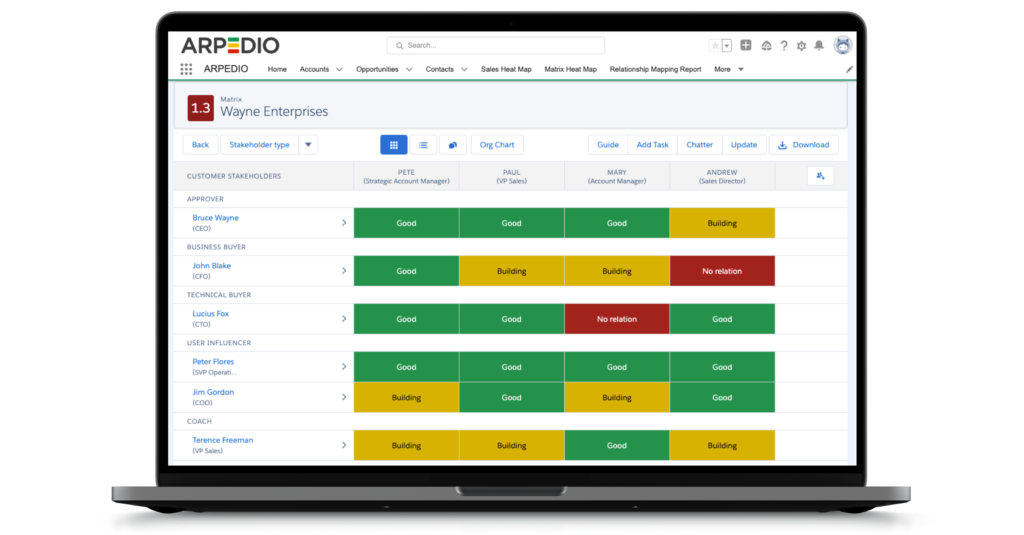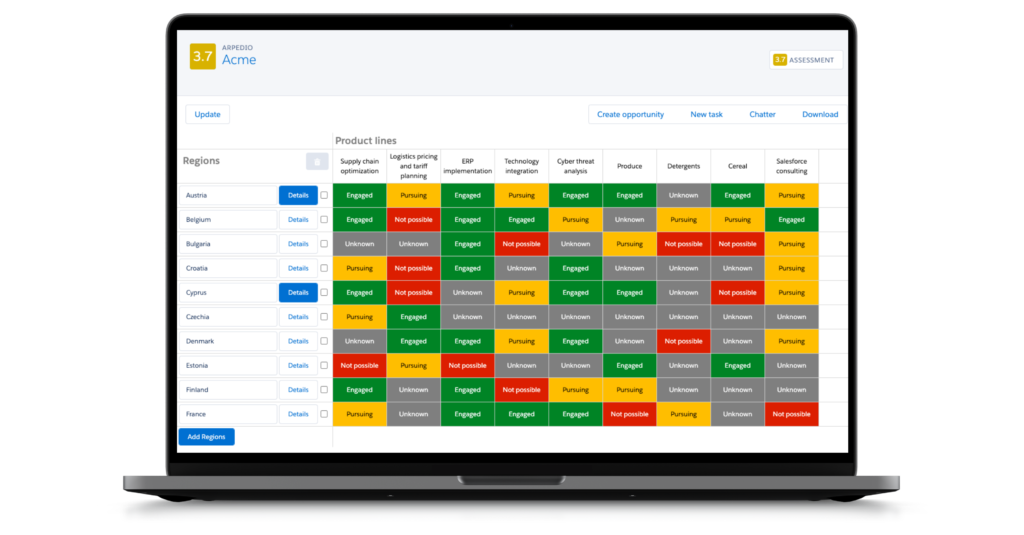In today’s modern economy, we see a great demand for highly skilled sales professionals – and knowing how to influence key decision makers can determine whether you make it or break it. Now, what role does psychology and strategy play in all this? What are the “raw ingredients'' of successful enterprise selling? And how can sales leaders educate and develop best-in-class sales reps to accommodate the growing need for proper sales education? Stay tuned as Sales Leader, Douglas Cole, gives you all the answers.
Table of Contents

About Douglas Cole
Douglas Cole wears many hats: He’s a full time Enterprise Sales Leader at LinkedIn, a part time Business School Lecturer, and finally, author of ‘The Sales MBA: How to Influence Corporate Buyers‘.
The Future of Sales Education – Recognizing Sales as Fundamental
In his recent book, Douglas addresses the fact that across 5000 colleges and universities in the US, only 200 offer courses or programs in sales. However, Douglas is convinced that we’re looking into a future where this number will increase significantly.
Up until now, two reasons in particular have held the industry and educational institutions back from embracing sales as a formal field of study, according to Douglas. The first reason has to do with the general assumption that sales is very much an ‘individualized system’, i.e. what works for one person doesn’t necessarily work for someone else. So, there’s been an assumption that you have to learn by doing, and that there isn’t really a solid curricular foundation for sales that works for everyone.
The other reason relates specifically to the business schools: Business schools tend to offer programs that are reflective of what is perceived to be prestigious fields within the business world, such as finance and skills related to consultants and senior executives. Sales, on the other hand, has historically had a bit of a reputation challenge because it has been perceived as being ‘second tier’ in comparison.
But this is changing as we speak. More and more people are recognizing that sales is fundamental to any business. And we’re starting to realize that sales play a big part, even in non-selling jobs and in life in general: Everytime we try to get people’s attention, or try to find a way to get people to care about what we’re trying to advocate, we’re actually selling.
10 years ago, Dan Pink estimated in his book, To Sell is Human, that around 40 percent of knowledge workers’ time was effectively ‘selling time’. But this number is undeniably much higher now. So, the combination of people’s growing awareness of the centrality of sales in a knowledge worker’s life, along with the growing awareness that sales is a bona fide discipline for any business leader to understand and master is starting to change the perception of what’s needed in terms of an actual sales education.
B2B Sales: A Combination of Psychology and Strategy
If you ask Douglas, strategy and psychology are the ‘raw ingredients’ of what actually impacts a buyer’s decision, topped with a supporting framework. The strategy element involves 1) being able to understand what is most important to your prospective client’s company with respect to your own product or service, and 2) being able to draw a clear connection between the competitive prospects of that business, and the extent to which you can help. In other words, this is the rock on which the business case is built in any corporate buyer conversation.
And then there’s the psychology element: Sales is ultimately a human-to-human conversation, and in that sense, it’s very much about psychology. The way that somebody perceives a value proposition is not in absolute terms, but in relative terms: it’s relative to other offers, it’s relative to other salespeople, it’s relative to a whole bunch of other things, and therefore it’s very much about psychology and your understanding of how someone’s psychology significantly affects the way you are perceived.
Along with strategy and psychology, ‘systems’ make the final ingredient in B2B sales. According to Douglas, these are the three main pillars that ultimately make up sales:
- Understanding the strategic and operational agenda
- Understanding how people make decisions
- Having a system in place for you as a seller and you as a sales organization that drives momentum
A Gradual Progression in Mindset: The Three Phases of Sales Education
Based on countless observations of sales professionals, who in many cases started off pretty fresh with no background in sales and then ultimately became very good at it, Douglas has noticed a general pattern divided into three phases: likability, mutuality and objectivity.
Likeability
What’s meant by the first phase, likeability, is that when people start out in sales, they are acutely conscious of the fact that their basic job is to get a very busy stranger to pay attention to them and ultimately to buy something. Often they’re not completely confident from the get go, and this creates a discomfort within. They then manage this discomfort by just trying to be as likable and as charming as possible. That’s what characterizes the first stage.
Mutuality
Then as sellers get better at their craft, they start to become more aware of what the buyer needs and what they’re trying to accomplish. This allows for the sellers to embrace their own agenda a little bit more honestly for a win-win outcome, reaching a place where both parties can benefit. This second step is what Douglas calls mutuality.
Objectivity
Finally, there’s a rarified space on level three, objectivity, which only a small portion of sales people get to. This is a state where the buyer knows perfectly well that the seller has a commercial agenda, and it’s obvious that the seller will benefit economically from a sale. Nonetheless, the buyer sees this salesperson as a trusted advisor and as plausibly objective – despite the agenda. This is the third and ideal state to be in as a sales professional in the B2B space. It’s very hard to get there, but the right mindset will allow you to operate on that level.
The Framework for Successful B2B Selling
In terms of the framework for successful B2B selling, there are three core parts to it. The framework and each of those parts are based on ‘a theory of the game’. This phrase is actually by Reed Hoffman, founder of LinkedIn. When he was younger, he played a lot of board games, and this was probably one of the things that helped him become more of a strategic thinker. Reed believes that in order to be good at any game, you need to have a theory of that game: you need to understand what the rules, parameters and protocols are that determine a winner of that game. Therefore, what Douglas tries to argue in his book, is that you need a theory of the game with respect to sales – and B2B sales in particular. You need to understand what’s really going on in a B2B sales conversation, and for this, Douglas suggests that there are three overlapping filters through which you (can) look at any sales conversation:
- external
- organizational
- interpersonal
Externally speaking, all sales conversations are to some degree related to the market-facing position of a company. You need to have some understanding of where this company has chosen to compete in the external marketplace, and what it’s going to take for that company to win. Organizationally, you have to have some understanding of where the energy for change is within the organization: Where is the energy coming from, and how can you feed it as a salesperson. And then finally, there’s the third interpersonal dimension focused on establishing what your prospect really cares about, and how you can get them to care about what matters to you.
Douglas suggests a neat way of labeling each of these three elements, and this is also the core structure of his book. We’ll dive more into these in the following chapter:
- The eternal dynamics is about becoming a strategist
- The organizational dimension is about becoming a change agent
- The interpersonal piece is about becoming a decision architect
Step 1: Becoming a strategist – Understanding Your Customers’ Customers
According to Douglas, there’s a level beyond having empathy for your direct corporate buyer. He talks about empathy for the person who buys from your client: your customers’ customers.
This can be a helpful organizing principle to understand strategy. Because, let’s not kid ourselves, strategy is a very big and complex realm. That’s why Douglas suggests finding a simple hook, or a simple way to organize that complex realm in order to develop genuinely strategic insights. And one of the simplest ways to do that is to ask yourself “who is the target buyer of my client, and how does that person perceive my client’s product or service”. Because once you put yourself in those shoes, it forces you to understand who the competitors within that space are, what the problem is that you’re solving for that person, what all the alternative solutions are that might be interesting for that person, what the points of differentiation are, and so on. Considering all this through the eyes of your customer’s target customer will offer valuable strategic insights and directly affect your business strategy.
Step 2: Becoming a Change Agent – Understanding the Organization
Over the years, there’s been written tons of literature about Change Management, and it can sometimes be overwhelmingly confusing figuring out where to start and where to finish. So when Douglas set out to find a simple framework for driving successful change in organizations, one particular image stood out as the best of the bunch throughout his research. This was an image of a Rider, and Elephant and a Path, originally from Jonathan Haidt’s book ‘Happiness Hypothesis’, and later adopted by a couple of notable change theorists, the Heath Brothers. It’s the image of a rider sitting on top of an elephant, directing the elephant over a path. And the reason why this image is such an important image and metaphor for understanding how organizations change is that each of these three things represent the three core things you need in order to drive any organizational change program.
The rider symbolizes the very precise, detailed, prescriptive instructions that you need to give a person, or an organization with respect to the change initiative, clarifying exactly what you’re trying to do and why. These things have to be answered, and that’s communicated through the image of the rider.
The rider then directs the elephant, and the elephant symbolizes the immensity of these sub-rational or subconscious forces that are always much more powerful than any kind of rational determination in an organization. It’s basically the social community, which is by far the largest determinant of whether a change is going to take hold in a company. And therefore, you need to know how to harness that social community.
Finally, the path is symbolic of the structural environment. Every change program is also going to be clearly impacted just by the recurring scenery, or in other words, what people are exposed to on a daily basis: What is the digital structure that they’re living in day to day? What are the meetings that they’re attending on a regular basis? What are the messages that they’re being bombarded with every day? All these structural elements also have a significant impact on the success of a change program.
Thus, the concept of ‘personal’, ‘social’ and ‘structural’ as the foundations of a strong change program are really nicely communicated in the image of the rider, elephant and path.
Step 3: Becoming a Decision Architect – Effective Sellers are Sophisticated Psychologists
This third step is heavily influenced by the academic field of Behavioral Economics, which is becoming increasingly popular. And the way it differs from traditional economics is that it argues that human beings are not rational. There’s so much evidence to suggest that most of our decisions are in fact irrational in some way.
The basis of Behavioral Economics says that there are boundaries within, and these boundaries determine how human beings make their decisions: There are boundaries of attention, i.e., there are limits to what we can actually pay attention to, there are boundaries of rationality, i.e., there are limits to how rational we can be, and then there are boundaries of self-interest, i.e., we’re only able to go as far as our self-interest will propel us to do. And these foundations in Behavioral Economics are directly applicable to selling.
Why? Because what you’re ultimately trying to do in a sale is first of all, try to get a customer’s attention, which means that you are operating within the bounds of attention. Next, you try to get that customer to make a judgment about your product or service, which means you’re operating within the bounds of rationality. And then third, you’re trying to get that customer to act, which means that you’re operating within the bounds of self-interest.
Therefore, Douglas is convinced that people who are good at selling–either consciously or unconsciously–have a deep understanding of Behavioral Economics: They have a theory of the game with respect to human psychology and how to work with other humans on these levels.
Ready to start taking advantage of sales enablement technologies like account-based selling? Ramp up with ARPEDIO’s account-based selling platform.
3 things Sales Leaders can do to Educate B2B Sales Reps for Successful Enterprise Selling
First of all, they need to impress upon their teams that they need a theory of the game. To be successful in any game, you need to have a macro understanding of what’s going on, and this means developing your own theory of what’s happening.
Secondly, they need to understand the importance of mindset. The reason why Douglas talks about becoming a strategist, becoming a change agent, and becoming a decision artist is that he’s trying to change the way a salesperson sees him- or herself. One of the most critical first steps when you are trying to uplevel your own ability is to elevate your own self-regard and to recognize that you’re actually doing something which is quite consequential as a salesperson:
You are trying to influence a business strategy, you are trying to influence the evolution of an organization, you are trying to help another person to be successful within that company.
In that sense, the three dimensions that we already discussed: external, organizational and interpersonal, are actually very significant elements of influence that you are learning as a salesperson. And when you get good at these things, you become very powerful professionally. Therefore, it’s important that sales reps understand this mindset shift and start seeing themselves in a more serious way. It’s a mindset, it’s a decision, and it’s a practice. It all comes down to a matter of deciding and a matter of consistently returning to these principles in your work.
Lastly, you have to make this something that you can monitor and track with your team through coaching conversations. To help you succeed with this, Douglas has come up with two key questions for each of the three areas (external, organizational and interpersonal) that you should be asking your sales reps during account reviews:
So lets say a sales manager is working with a seller and trying to push that seller to be better on the strategy level, then Douglas suggests asking ‘where do they compete?’ and ‘how can we help them win?’ Within the realm of organizational dynamics, try asking ‘where is the energy for change coming from?’ and ‘how are you feeding that energy?’ And finally on the interpersonal level, what you want to ask is ‘what matters to them?’ and ‘how are you getting them to care about those details?’
Bringing up and repeatedly asking these simple questions during coaching conversations, will help sales managers and leaders drive improvements in the performance of their team(s).
How is Technology Developing in the World of Sales?
Working at a place like LinkedIn, Douglas has a front row seat to a lot of the developments happening in the world of Sales right now. As part of his job, he listens to a lot of client conversations, and this is a great way to get a sense of what people are dealing with and what their pain points are.
A lot of the things we’re seeing right now simply stem from a general technology, or information technology trend: the world has become swamped with informational complexity, and that has brought a couple of ramifications.
As far as selling is concerned, one is that the number of stakeholders who are involved in a corporate selling decision continues to rise. Looking back around six years ago, it used to be an average of seven people per enterprise buying decision. Today, it’s more than double that, and it’s as high as 20 or more when you’re talking about complex sales in particular. The proliferation of information and knowledge has led to role specialization, which ultimately means that more and more stakeholders are required for any company to make a buying decision.
Another implication has to do with the day-to-day buyer or seller dynamic. The amount of information has reached a breaking point: buyers are overwhelmed with outreach, and sellers’ response rates are going down. We’re talking information overload, and what this means is that the industry is undergoing a fundamental shift in the way it views data. We see a shift from a ‘data search model’ to more of a ‘data sensing model’.
In other words, we used to just give our sellers and teams a bunch of new information, assuming that it would be useful, and letting them deal with it in whichever way they wanted.
This is no longer a reasonable request because there’s too much to process. There’s no way that any human alone can make sense of this much information. In the age of information overload, we need something that can help us distinguish the signal from the noise. Therefore, Douglas emphasizes AI driven sales, or ‘Deep Sales’ as the biggest development to date. AI driven technology is able to anticipate the bioreceptivity, the organizational changes, and whether a deal is at risk because of people movements that are perceived within that organization.
Fundamentally, sellers crave some new capabilities that allow them to prioritize and distinguish the signal from the noise, and this is what AI can bring to the table. According to Douglas, this will by far be one of the biggest developments in Sales, and we’re already starting to see the impact.
Key Takeaway
For his key takeaway, Douglas leaves us with a quote from best-selling author of The Seven Habits of Highly Successful People, Stephen Covey:
This is essentially what Douglas argues in his book: Focus on the mental model. It all starts with the way a seller sees himself, i.e., as a Strategist, as a Change Agent, and finally as a Decision Architect. And returning to the simple questions that we presented above is what will allow salespeople to get better and better in each of these three realms.
If you are curious to learn even more from Douglas, his book ‘The Sales MBA’ is available here.
Watch or rewatch the LinkedIn Live with Douglas here:

Maximilian Opp, Account Executive
+45 53 50 78 33
max@arpedio.com
linkedin.com/in/maximilian-opp/
Follow us on LinkedIn to get all the newest perspectives and insights around strategic relationship management and sales innovation.

Maximilian Opp, Account Executive
+45 53 50 78 33
max@arpedio.com
linkedin.com/in/maximilian-opp/
Follow us on LinkedIn to get all the newest perspectives and insights around strategic relationship management and sales innovation.
#1 Account-Based Selling Platform
Powerful alone. Superior together.
Boost win rates and reduce sales cycles. Enhance forecast accuracy.









